By: debbie lynn elias
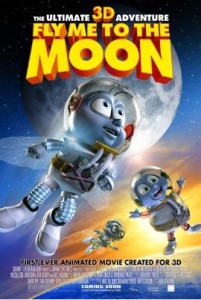
How many times in your life have you looked out your window or lay on your lawn gazing up into the universe under the bright light of a full moon and wonder what it would be like if little old you could fly to the moon? I recall a night many years ago, long before Apollo 11 and Neil Armstrong and Buzz Aldrin, when my father was lifting me up outside in our backyard in the dead of night pointing up at a satellite orbiting the earth. I could see it move through the sky and to this day, the wonder and awe of that one moment stays with me. I remember thinking that was one the neatest things in the world and wondered even then what it would be like to fly into space or better yet, to the moon. I watched every NASA launch on tv, mesmerized and glued to the screen fascinated with the prospects of space travel and the moon. Even better was having a dad with actual launch footage of various Mercury, Gemini, Apollo and satellite missions bringing it into school showing it to the class. So you can just imagine my thrill some years later when America finally flew to the moon and Armstrong and Aldrin put their footprints in moondust. Content for 40 years with getting goosebumps just thinking about that night and those now infamous black and white broadcast images, my fascination and thrill with the idea of space travel and the moon was reinvigorated when I sat down with Dr. Edwin “Buzz” Aldrin, who inspired me – and hopefully will all of you – to keep thinking about flying to the moon, just like little Nat McFly and his pals IQ and Scooter in the “Must See Family Film” of the summer, FLY ME TO THE MOON. Perhaps not as earth-shattering as man walking on the moon, FLY ME TO THE MOON is nevertheless a technological achievement and masterful accomplishment being the first 3D animated film to be completely shot in 3D! And it’s FUN!
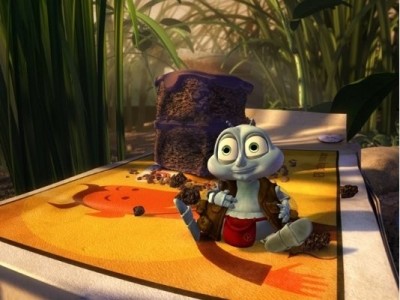
It’s July 1969 and the world – including the insect world – has its eyes on Cape Canaveral and the US space program. Buzzing with excitement over the upcoming Apollo 11 first manned mission to the moon, Nat McFly is intimately familiar with the art of flight, but thanks to tales of glory from his Grandpa about flying with Amelia Earhart during her solo flight across the Atlantic (which by the way was a success thanks to Grandpa), Nat dreams of more, so much more, like say, flying to the moon!
Determined to fulfill his dream, Nat and his pals IQ and Scooter hatch an elaborate plan to sneak onto the command module; a plan that starts with hiding in the lunch pail of a NASA worker assigned to the mission. Unfortunately, despite always hearing the buzz about projects and current events, our little trio didn’t quite get all the details about the flight. This is no quick turnaround jaunt shooting up into the sky and coming back down to Earth. Oh nooo! This mission is more like a week, which for Scooter seems like a lifetime since he didn’t bring food!
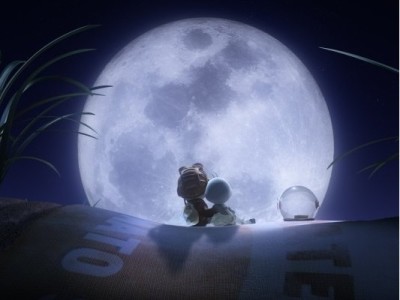
Undeterred, our adventurers make it in the module by hiding inside the helmets of astronauts, Armstrong, Aldrin and Collins, and boy, oh boy, talk about a thrill!!! Just imagine how you would feel to look out the window of a space capsule and see nothing but stars and the moon! Imagine weightlessness and floating and even orange juice that comes out of plastic bags as gelatinous bubbles! And imagine being inside Neil Armstrong’s helmet as he puts his foot onto the surface of the moon! That’s one small step for a fly, one giant leap for the insect world! Just IMAGINE! But Nat doesn’t have to imagine. He’s there. This is happening to him. His dreams are coming true!
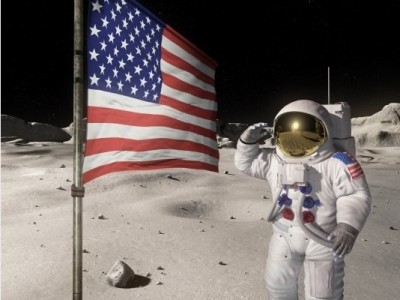
But wait a minute! Imagine what’s happening back on Earth, especially when someone at NASA Ground Control catches sight of the little stowaways during a broadcast? Oops! And what about when Mrs. McFly and the rest of the community see Nat, IQ and Scooter wildly waving on tv from inside the command module? And what happens when Russian spy-flies decide to sabotage the Apollo mission because the Soviets lost the space race? Will our heroes (both legged and winged) make it back to Earth safely – especially with an electrical short in the space ship and sabotage occurring on the ground? What can they do? What can we do? Who can save them?
Written by Domonic Paris, the story is a fanciful delight, capturing not only the imagination of young and old alike, but by inspiring a whole new generation of dreamers with the reality of space travel and to reach for the stars. Thanks to superior voice casting – and 3D animation – the characters are real. Kelly Ripa makes a perfect Mrs. McFly as she waits and worries about her son Nat. Tim Curry is delicious as he channels Rocky & Bullwinkle’s archnemesis Boris Badanov into the evil Russian spy Yegor, while Nicolette Sheridan’s Nadia more than resembles Boris’ partner Natasha, but with a touch of sweetness. Christopher Lloyd, himself a veteran time traveler as Doc Brown in the “Back to the Future” trilogy not to mention putting in a little space as a Klingon in Star Trek, is the joyous backbone of the McFly family. As Grandpa, his bedtime stories are tales of glory and fancy to delight the child in us all. Stealing my heart, however, are Trevor Gagnon, David Gore and Philip Bolden as Nat, Scooter and IQ, respectively. Each is so full of life and joy, capturing the excited, adventurous and sometimes wistful voice of every little boy (and girl) I know, be they in Culver City or Plymouth Meeting.
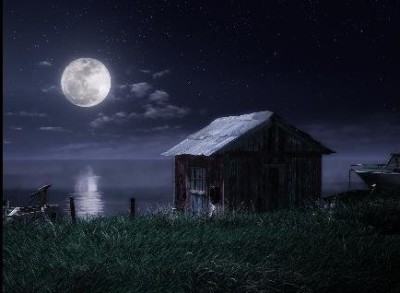
The icing on the casting cake taking fantasy and making it a reality is Dr. Edwin “Buzz” Aldrin appearing as himself in the film’s epilogue. When I asked Dr. Aldrin about why he became involved in FLY ME TO THE MOON, his answer was simple and from the heart. Education and public awareness. “There was a person who was in public affairs who knew that I was quite available and anxious to participate in the public knowing more and more about what our space program’s about and they knew that I would probably be responsive to this… I said, ‘Sure I will.’ So I learned about the basic plot and it was very intriguing so I was very very happy to participate in recording the epilogue.”

Seeing this film as an opportunity as a way of expanding the public’s mind and garnering support, “The more [the public] understand the more supportive they will be of the things we are trying to do. We need public support for supporting exploration because people are always saying look at all this money being spent on space. It makes a big splash. It’s very highly visible. It’s covered by the networks but it is not that expensive. At the peak of the Apollo it was 3.5% or 4% at the most [of the federal budget] for a year or two and right now it is 6/10th, 7/10th of 1% of our national budget. That’s not a lot of money. The only thing that excites the public is when something goes wrong.” FLY ME TO THE MOON is way of showing both an old and new generation of that goes right.
Dr. Aldrin is “ very interested in supporting the ideas of exploration and why we should explore and what did we get out of exploration of the past and to use these 40th anniversary of different Apollo missions to remind the public of why we want to explore in the future. That’s being done by Share Space [Dr. Aldrin’s foundation]. Having somebody be able to purchase a share of space like on the stock market with dividends being distributed by random selection and limit this to people who have exhibited a desire to support space activity by joining some kind of advocacy group.” For the past 10-15 years he has been a vocal advocate of things such as “tourists in space” and is very encouraged with things like Richard Bransen’s White Knight 2 which “should be able to carry 6 passengers and a crew of 2 up to the fringes of space, 100 km. People should experience about 4 minutes of weightlessness or floating inside the cabin and I think that’s going to be a very intriguing exciting adventure.” (No wonder Nat McFly was so desperate to fly into space!)
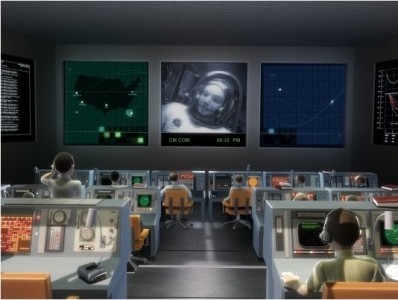
Instrumental in astronautic design for many years, including creating and configuring what is now known as the Aldrin Orbital as well as his own techniques for manned space rendezvous which are used by NASA today, Dr. Aldrin is passionate at every turn about space exploration and educating our youth, particularly in the K-12 school system, encouraging the public – and families – to see films like FLY ME TO THE MOON.
But perhaps, the most important thing I learned from Dr. Aldrin involving space travel stems from my adventurous nephews Eddie and Tommy. Parents, you will be happy to know, that there is no chance of your child stowing away on a space flight!
But the real hero of this film is director Ben Stassen. Already a veteran in 3D production, he takes the technology to new heights. Relying on the original blueprints from NASA as well as actual transcripts of the mission, he melds impeccable technical recreation (right down to printed circuit boards, mission control and scaled images of Armstrong’s actual footprint on the moon) with meticulous colorful animated exuberance of the insect world and the heart-stopping inspiration of the Apollo 11 mission and man walking on the moon.
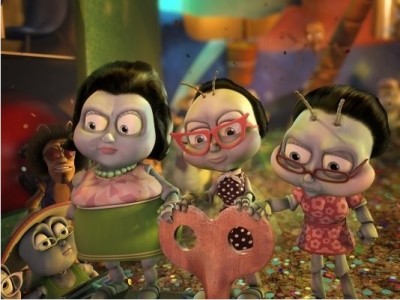
Key to the wonder of FLY ME TO THE MOON is the new digital 3D lensing which, according to Stassen, requires a “totally different approach to filmmaking.” Gone are the red and blue anaglyph glasses for viewing, replaced with sleek flat grey lenses. With FLY ME TO THE MOON, “you use 3D immersion as a way to position the viewers and take them along on a space adventure of the third kind.” By using flies as the main characters, it enabled Stassen to go “windowless” and catapult the 3D experience to the next level with the audience becoming flies on the wall. Flies fly from the screen towards you as does confetti and even rocket ships, water ripples and glisten as lightening bugs flitter around your head, all thanks to Stassen’s creation of photo realistic environments. The end result is breathtaking with such realism you will find yourself reaching into the air trying to catch our own little lightening bug or touch the surface of the moon.
According to Dr. Aldrin, 2020 is the current goal to return to the moon. “I’m trying to be a catalyst to try to get a transition advisory team to transition from space shuttle to space station to space exploration. I think that objective [of 2020] is very good for the nation. “ And while the world waits for that day, we can all take our own trip to the moon right now with FLY ME TO THE MOON. It’s out of this world!
Directed by Ben Stassen. Written by Domonic Paris. Rated G. (89 min)












